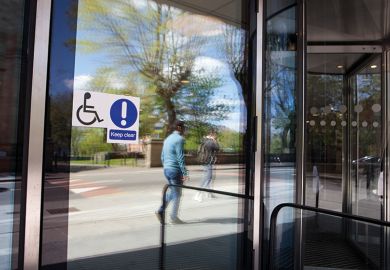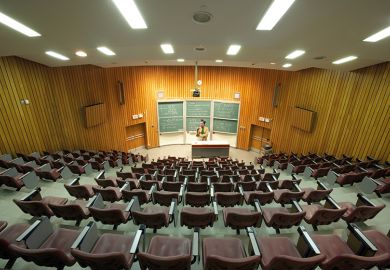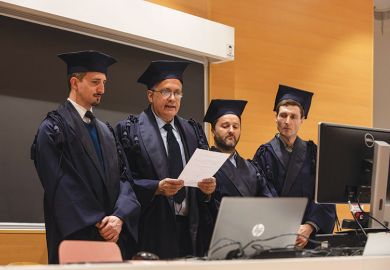The current global spread of the coronavirus has brought into sharp relief for many institutions the need for urgent measures to be taken to limit the rate of infection.
Despite official government advice stating that “closure of the workplace is not recommended” in the event of a member of staff or the public with confirmed Covid-19 having been in the workplace, there is no shortage of contrary suggestions advising otherwise.
Indeed, a recent Times Higher Education article reports on advice from experts that “Western universities should be prepared for the possibility that they may need to close their campuses to help limit the spread of the novel coronavirus”. Suggestions have abounded about the need to allow students to study away from the campus or utilise technology to deliver lectures remotely.
As alarming as all this sounds, the idea that universities could make structural changes to accommodate students for health-related reasons is nothing new to disabled students who are already aware that universities should make structural changes.
The fact that this is being discussed now as an urgent matter of public health will come as small comfort for those many disabled students who have not completed their studies because of the inadequate support available at their universities. Earlier this month the government published the report Support for disabled students in higher education in England, which states clearly that “disabled students in higher education have somewhat worse outcomes from higher education than non-disabled students. Students with a disability are more likely to drop out of courses and those that finish their degree tend to have lower degree results.”
The report goes on to remind readers that universities are legally required to put in place “reasonable adjustments”. This is “to make sure that people who are disabled are not put at a substantial disadvantage compared to people who are not disabled in accessing education”.
The problem is that often “reasonable adjustments” can mean placing the university in a sort of catch-22 ethical paradox.
Take for example the reported rise in students with mental health conditions. As someone whose responsibility it is to make recommendations for adjustments to academic departments, I’m often requested to suggest that students with high anxiety or borderline personality disorder are either allowed not to be penalised for a fluctuating attendance pattern or allowed to access certain modules remotely.
Similarly, students with long-term medical conditions or mobility impairments may find the strain of attending lectures so physically debilitating that their ability to focus and concentrate is adversely affected. What becomes apparent in many instances is that “access” and “inclusion” are not necessarily the same thing.
For students experiencing mental health issues, their presence in a large lecture theatre may induce such feelings of panic as to render their attendance almost entirely ineffectual. Similarly, students with medical conditions and physical impairments may find that adjustments have been made to give them access to teaching spaces, but in doing so their energy levels are such that inclusion in teaching activities is limited.
Thus, universities find themselves locked in the ethical dilemma of whether to prioritise access to the physical teaching environment, which may in turn prevent inclusion, or enable inclusion by allowing alternative assessments or remote learning, but which could possibly deny physical access.
The idea of “reasonable adjustments” is based on the social model of disability, which says that “people are disabled by barriers in society, not by their impairment or difference”, and which takes its cue from the disability rights movement of the 1970s.
Disability activists have historically fought to remove attitudinal and institutional barriers that serve to prevent full inclusion and access to society for disabled people. So in that regard, an adjustment to allow a disabled student to be physically absent from the university campus because of their disability can be seen as undermining the underlying principle of the social model. Yet conversely, by doing so their inclusion on the course may be enabled more than would be possible otherwise.
Which, of course, brings us back to the medical emergency of coronavirus. The idea that suddenly so many courses and modules can be taught and studied away from the campus must come as a surprise to those disabled students who either underachieved or dropped out of university precisely because this very flexibility was not available to them.
In time the higher education sector will need to examine what exactly it means when it talks about being “fully accessible” or “inclusive” for disabled students. It will also need to consider its own assumptions regarding the relationship between teaching strategies, learning activities, students’ independent learning and assessment.
Accessibility and inclusion do not need to be mutually exclusive, but for this synthesis to occur the emergency flexibility being considered now may need to become best practice in the near future.
Stephen Campbell is dyslexia and disability coordinator at Leeds Trinity University.
Register to continue
Why register?
- Registration is free and only takes a moment
- Once registered, you can read 3 articles a month
- Sign up for our newsletter
Subscribe
Or subscribe for unlimited access to:
- Unlimited access to news, views, insights & reviews
- Digital editions
- Digital access to THE’s university and college rankings analysis
Already registered or a current subscriber?








